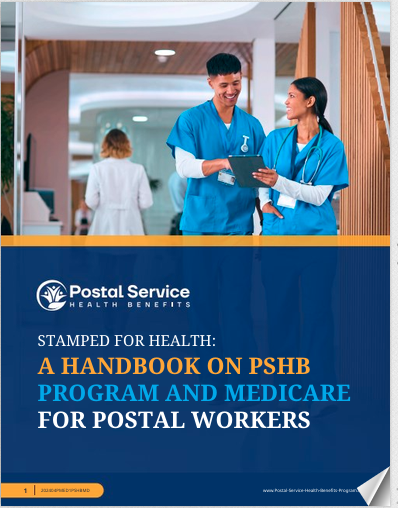Key Takeaways:
- Postal employees can maximize their 2025 health benefits by understanding the Postal Service Health Benefits (PSHB) Program and making informed choices during Open Season.
- Reviewing plan options, staying updated with health benefit changes, and utilizing wellness resources are essential strategies for effective health benefit management.
How Postal Employees Can Make the Most of Their Health Benefits in 2025
As 2025 approaches, postal employees are presented with a unique opportunity to optimize their health benefits under the new Postal Service Health Benefits (PSHB) Program. This program, designed specifically for postal workers and retirees, will replace the Federal Employees Health Benefits (FEHB) Program, offering tailored options that cater to the needs of this workforce. Navigating these changes can seem daunting, but with the right information and strategies, postal employees can ensure they get the most out of their health benefits.
Understanding the Postal Service Health Benefits (PSHB) Program
The Postal Service Health Benefits (PSHB) Program is a significant shift from the traditional Federal Employees Health Benefits (FEHB) Program. Set to take effect in 2025, the PSHB Program was established under the Postal Service Reform Act of 2022 to provide postal workers and retirees with a dedicated health benefits program. This change is pivotal as it addresses the unique health needs of postal employees and retirees, ensuring that they have access to comprehensive health coverage tailored to their specific circumstances.
Under the PSHB Program, postal employees will have access to a variety of health plans designed to meet their needs. The program will include options similar to those previously available under the FEHB, but with adjustments that reflect the workforce’s specific requirements. Understanding these changes is crucial for postal employees as they prepare for the 2025 Open Season, during which they will need to choose their health plans for the upcoming year.
Key Changes to Be Aware Of
Postal employees should be aware of several key changes with the transition to the PSHB Program. Firstly, all postal employees and retirees, except those covered by Medicare Part B, will need to enroll in a PSHB plan. This enrollment is mandatory and will replace their current FEHB coverage. For those who are enrolled in Medicare Part B, their PSHB plan will work in conjunction with their Medicare coverage, potentially reducing out-of-pocket expenses.
Another important change is that the PSHB Program will likely offer enhanced wellness programs and preventive care services, reflecting the Postal Service’s commitment to promoting a healthier workforce. Employees should take advantage of these resources, as they can lead to improved health outcomes and potentially lower healthcare costs.
What to Consider During Open Season
Open Season, the annual period during which federal employees and retirees can enroll in or make changes to their health insurance plans, is a critical time for postal employees. During this period, which typically runs from early November to mid-December, postal workers will have the opportunity to review and select their PSHB plans for 2025.
When considering your options, it’s important to evaluate your current health needs and anticipate any changes that might occur in the coming year. This includes considering factors such as:
- Medical History: Review any ongoing health conditions or medications that may require specific coverage.
- Family Needs: If you have dependents, ensure that the plan you choose offers adequate coverage for their needs.
- Budget Considerations: While exact pricing should not be a deciding factor, understanding the cost structure of each plan in terms of deductibles, copayments, and out-of-pocket maximums is essential.
- Provider Networks: Ensure that your preferred healthcare providers are included in the plan’s network to avoid unexpected costs.
By carefully assessing these factors, postal employees can select a PSHB plan that best meets their needs.
Maximizing Wellness Resources
One of the key benefits of the PSHB Program is its focus on wellness and preventive care. Postal employees can take advantage of a wide range of wellness resources, which may include:
- Annual Health Screenings: Regular check-ups can help detect health issues early, leading to more effective treatments and better outcomes.
- Mental Health Support: Access to mental health resources, including counseling and stress management programs, is crucial for maintaining overall well-being.
- Chronic Disease Management: For employees with chronic conditions, disease management programs can provide support and guidance to manage their health effectively.
- Fitness and Nutrition Programs: Many plans offer incentives for participating in fitness programs or adopting healthier eating habits, which can contribute to long-term health.
Engaging with these wellness resources not only helps improve health but can also lead to cost savings by preventing more serious health issues down the line.
How to Stay Informed About Health Benefit Changes
Staying informed about health benefit changes is essential for postal employees to make the most of their benefits. The Postal Service is expected to provide detailed information about the PSHB Program, including plan options and enrollment procedures, well in advance of the 2025 Open Season.
Postal employees should regularly check official communications from the Postal Service, such as emails, newsletters, and the employee portal, to stay updated on any new developments. Attending informational webinars or sessions offered by the Postal Service can also provide valuable insights and clarify any questions employees may have about their health benefits.
Additionally, postal employees can consult with licensed insurance agents who are knowledgeable about the PSHB Program. These agents can provide personalized advice and help employees navigate the complexities of selecting a health plan that suits their needs.
Navigating the Transition for Retirees
For postal retirees, the transition to the PSHB Program may require additional considerations. Retirees who are enrolled in Medicare Part B will need to understand how their PSHB plan will coordinate with their Medicare coverage. This coordination is important to ensure that retirees receive the maximum benefits available to them while minimizing out-of-pocket expenses.
Retirees should also review their prescription drug coverage, as the PSHB Program may offer different options compared to their previous FEHB plans. Ensuring that their medications are covered under the new plan is essential to avoid disruptions in their treatment.
Moreover, retirees should be aware of any deadlines related to the transition to the PSHB Program. Missing these deadlines could result in gaps in coverage or being automatically enrolled in a default plan that may not best meet their needs.
Special Considerations for Active Postal Employees
Active postal employees, particularly those nearing retirement, should start planning for their transition to the PSHB Program as early as possible. Understanding how the PSHB Program will impact their retirement health benefits is crucial for making informed decisions.
Employees who are close to retirement should consider how their health needs might change after they retire and choose a plan that provides adequate coverage both now and in the future. This includes evaluating the plan’s coverage for long-term care, as well as its provisions for dependents who may still require health coverage after the employee retires.
Additionally, active employees should explore any available health savings options, such as Health Savings Accounts (HSAs) or Flexible Spending Accounts (FSAs), which can provide tax advantages and help cover medical expenses.
Strategies for Managing Healthcare Costs
While the exact costs associated with the PSHB Program will vary depending on the plan selected, postal employees can adopt several strategies to manage their healthcare costs effectively:
- Use Preventive Services: Taking advantage of preventive care services can help catch health issues early, potentially reducing the need for more expensive treatments.
- Choose In-Network Providers: Using healthcare providers within your plan’s network can significantly reduce out-of-pocket costs.
- Review Your Plan Annually: As health needs change, it’s important to review your plan each year during Open Season to ensure it continues to meet your needs.
- Utilize Telehealth Services: Many plans offer telehealth services, which can provide convenient and cost-effective care for minor health issues.
By following these strategies, postal employees can make the most of their health benefits while managing their healthcare expenses.
The Path Forward: Preparing for 2025
As postal employees prepare for the 2025 transition to the PSHB Program, it is essential to approach this change with careful planning and informed decision-making. By understanding the key features of the PSHB Program, evaluating their health needs, and staying informed about benefit changes, postal employees can ensure they are well-prepared to make the most of their health benefits in 2025.
Staying proactive and utilizing available resources will not only help postal employees maintain their health but also ensure that they are making the best possible choices for their well-being and financial security.
Contact Information:
Email: [email protected]
Phone: 7045556789






